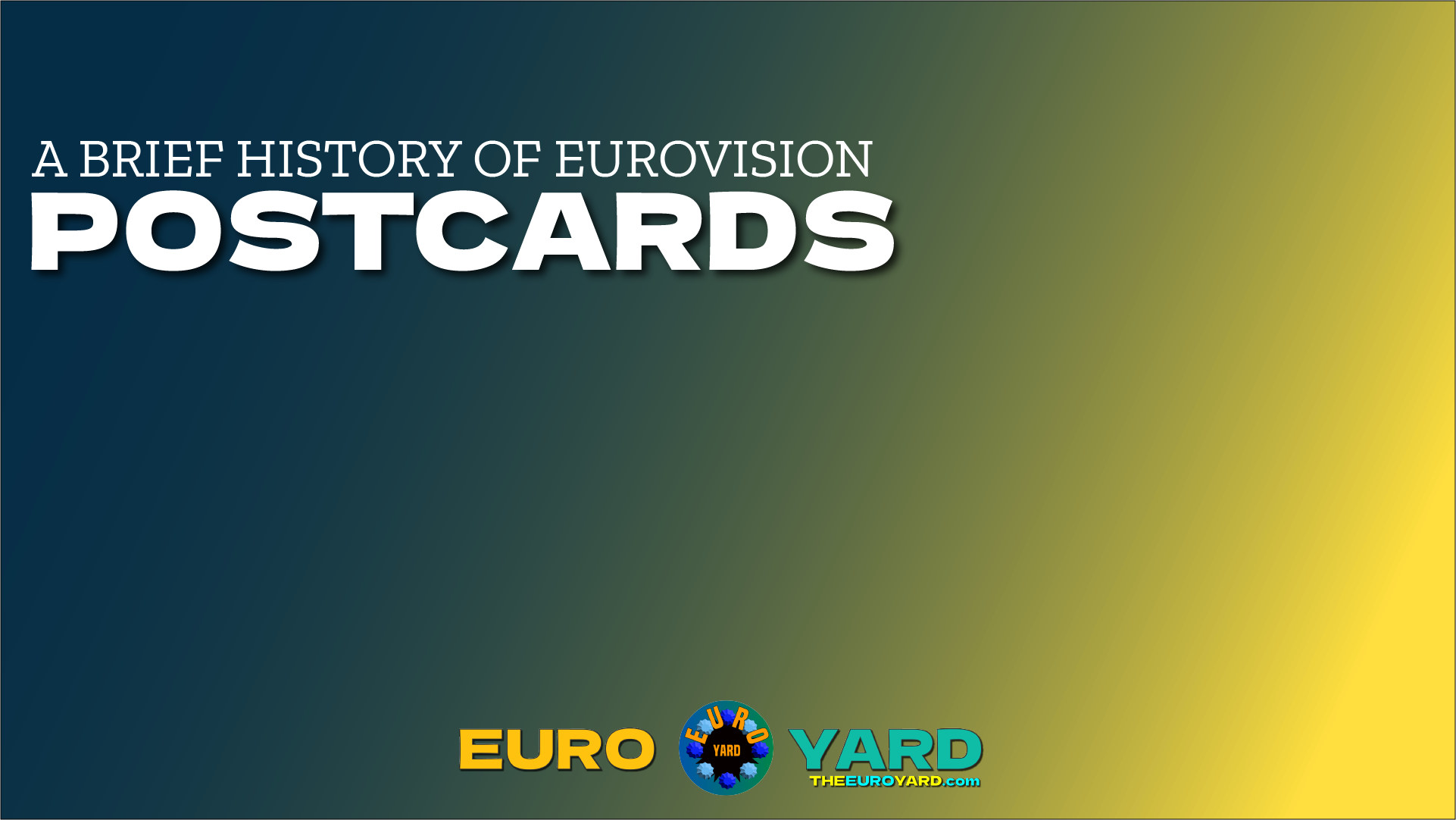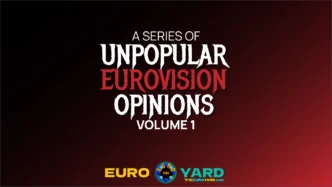Have questions about Eurovision postcards and how they came to be?
The evolution of the “postcard” – a short film or introductory video before each country’s Eurovision performance – was no straight-line development. Indeed, the contest did not start out with them, and it took decades before they were an institution. How did we get to where we are today?
What did the Eurovision Song Contest do in the early days in between acts?
Very little. A performer would sing, usually in their best suit or evening gown, and then they would leave the stage. The host would then step up to the microphone and introduce the next act. Sometimes, the national commentators would set up the following acts and there was no break in between songs. Such a thing would never happen today. In 1968, performers were showed backstage just before they went out; that could hardly be considered a “postcard,” but it was a quirk.
When was the first time Eurovision postcards aired?
The year was 1970, during the 15th annual ESC. Because the 1969 Eurovision Song Contest and its four-way tie were such a colossal cluster, multiple countries boycotted the proceedings in 1970, leaving a great deal of broadcast time for the host country to fill. The Netherlands’ Eurovision broadcaster, which at the time was NOS, decided to air short films featuring each of the acts before they took the stage. The original intent was to stretch out the show’s content since there were so many absent nations, and the producers did not want the live show to be too short. This happy accident resulted in the first “postcards.”
Were the Eurovision postcards seen every year after 1970?
No; most countries did them in their hosting years, but some did not. During the 1970s, postcards were featured six times. The year after the Dutch “invented” the postcard, Ireland stuck with it the following year when they hosted in 1971, but the United Kingdom (hosting on behalf of Monaco) did not do them in 1972. Other years with no postcards were 1973, 1977, and 1978. Israel brought them back in 1979, their first time hosting, and hammed up the comedy to a level not previously seen.
At the start of the 1980s, postcards were more of a thing, but not quite all the way yet. In 1980, the Dutch hosts kind of did them: Each nation was introduced by a native speaker while some still frames of the singers appeared. Both 1981 and 1982 had featured postcards, but 1983 in Germany did not.
When did Eurovision postcards become a permanent fixture?
That happened in 1984. Luxembourg did them, and they have been featured in every contest since. By the way. Luxembourg’s postcards were some of the trippiest, possibly narcotic-induced postcards you will ever see at the Eurovision Song Contest. It’s a year worth watching just for that. Now that they are back in the contest, I look forward to seeing what Luxembourg does should they ever win again.
As the contest has evolved, so has the quality of the Eurovision postcards. They went from quick and relatively uneventful briefs to, in some cases, cinematic and visually-appealing features. Over the course of the 1990s, themes developed, including a cartoon mascot, well-wishes from politicians, and even biblical stories. This continued into the 2000s and beyond.
Most host countries have featured the singers and/or their nations, but not all – for example, Estonia’s in 2002 and Azerbaijan’s in 2012 exclusively focused on the host country, while Sweden’s in 1985 were the sole postcards to highlight the composers rather than the performers.
The mid-2010s featured some excellent years in the postcards department, but Britain’s postcards in 2023 set a new benchmark, as the United Kingdom hosted on behalf of Ukraine. The postcards that year mostly featured settings from three countries: the United Kingdom, Ukraine, and the performing country if not one of those two.
Notable Years in Postcards History
| 1970 | NED | The first Eurovision Song Contest “postcards” were aired by The Netherlands to pad time during the broadcast. |
| 1979 | ISR | Israel hosted Eurovision and introduced humor into the postcards for the first time. |
| 1984 | LUX | Luxembourg and their wild postcards began an unbroken streak of years in which postcards were featured, extending over four decades to the present. |
| 1990 | YUG | All the postcards featured a cartoon mascot, “Eurocat.” |
| 1991 | ITA | Postcards featured all the artists singing covers of famous Italian songs. |
| 1996 | NOR | The postcards featured well wishes from each nation’s president, prime minister, or cabinet ministers. |
| 1999 | ISR | The theme of the postcards was Old Testament stories and other biblical themes, animated to life. |
| 2008 | SRB | Postcards featured literal postcards written in the performing country’s native language. |
| 2010 | NOR | The performers, live on stage, were featured in their country’s postcards. |
| 2014 | DEN | Performers created artwork of their nations’ flags during their postcards. |
| 2023 | GBR | For the first time, as many as three countries were featured in a single postcard. |













